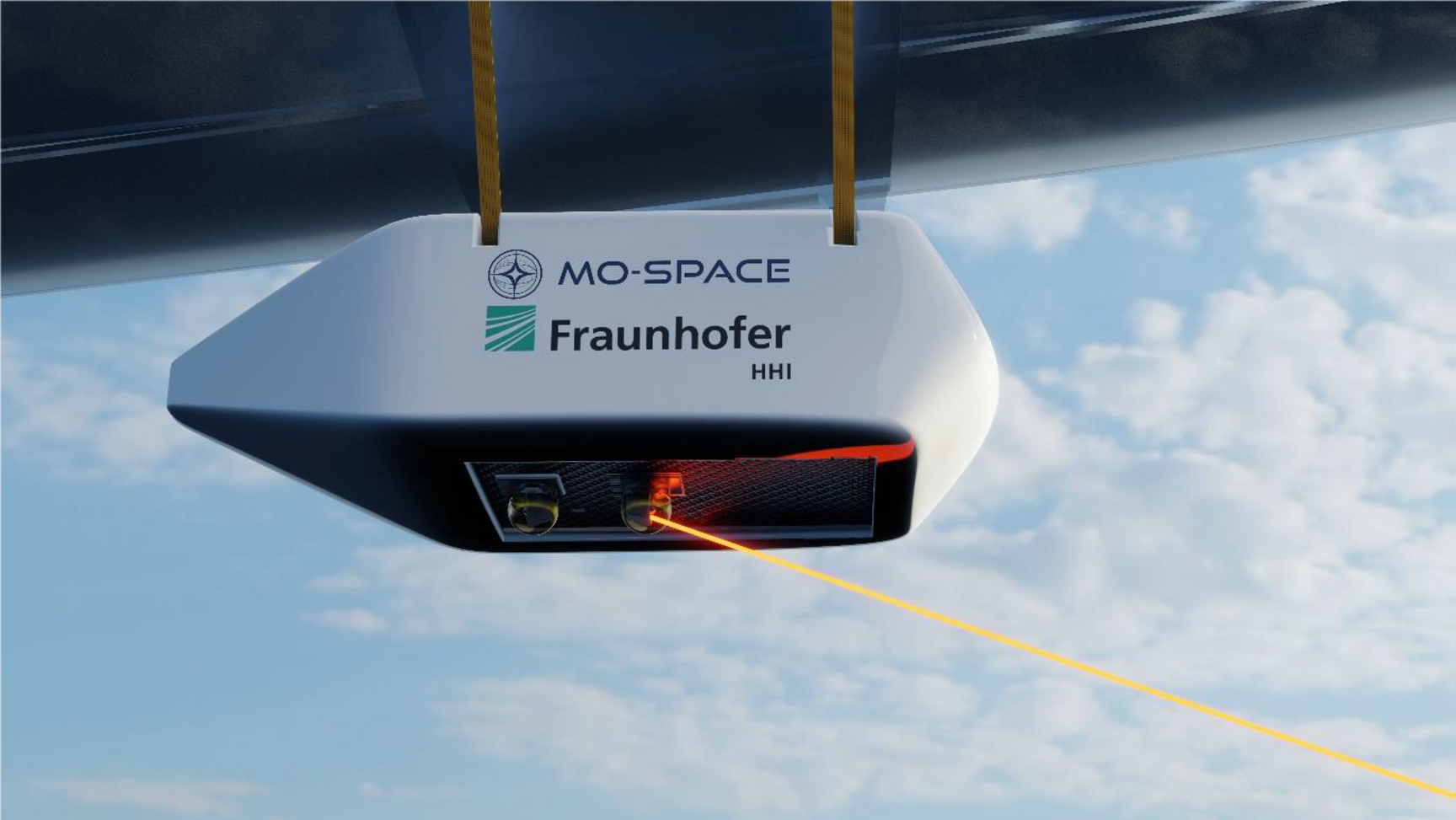
Space FIT
Research on compact QKD receiver payloads for high-altitude platforms and satellites
Funded by the state of Berlin - Co-funded by the European Union (EU)
Duration: October 2024 - September 2027
Partners
- MO-SPACE Spacecraft GmbH (Berlin)
- Fraunhofer Heinrich-Hertz-Institute (Berlin)
Project Description
The project Space FIT researches compact QKD receiver payloads for high-altitude platforms and satellites. These are an essential component of future QKD networks. The goal is to explore the smallest and most powerful system of its kind. The particular compactness is achieved through newly developed and enormously miniaturized InGaAs-based SPAD single-photon detectors.
Motivation, Goals and Procedures
This project aims to contribute to adapting the tools for future IT security to the requirements of an era of the new generation of quantum computers. A crucial component of these IT security standards is the application of quantum communication methods. The data is encrypted using QKD methods (QKD = Quantum Key Distribution).
Space FIT aims to research a high-performance QKD receiver payload for high-altitude platforms and satellites and to develop a concept for the subsequent development and manufacturing of such payloads. The payloads are intended to include the SPAD systems developed by HHI. The project should also pave the way for further miniaturization of QKD receiver systems.
The high-performance QKD receiver payload to be researched in this project would be the first of its kind worldwide.
Innovation and Perspectives
It is expected that by the year 2028, several QKD networks with high-altitude platforms and satellites will become operational. The miniaturization of QKD receiver payloads holds great potential for developing small receiver systems that can be used in mobile stations of QKD networks.
InGaAs-SPADs for single-photon detection in the short-wave infrared are the only QKD detector technology currently suitable for the mass market. A compact co-integration of the detector chip and electronics is particularly attractive for application fields with limited payload and power supply. Besides their use in QKD receiver systems, there are many other application fields in quantum sensing, where particularly free-running SPADs in the short-wave infrared or telecom wavelength range are used. Examples include Light detection and ranging (LiDAR) in the automotive as well as aerospace sectors, and Fluorescence lifetime imaging microscopy (FLIM) in medical diagnostics.
